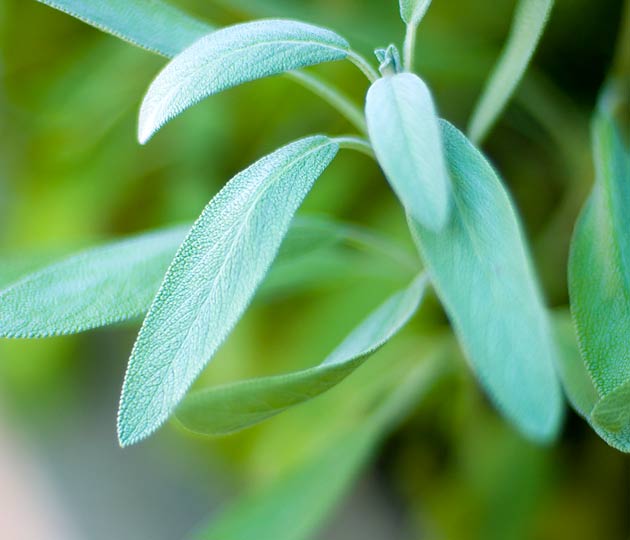Tags
Related Posts
Share This
Fall flavour: Sage

I’ve mentioned my gardening skills, or complete lack thereof, on this site a few times.
I can’t grow a tomato or zucchini to save my life but one thing I’ve had inexplicable luck with is herbs, especially the hardy fall herbs which seem impervious to my attempts to kill them with my gardening skills.
If the only thing you saw in my garden was my sage plants, you’d be pretty impressed with my incredible green thumb ability.
I’ve got loads of wonderful sage and rosemary (watch for a post on that in the near future). And it’s peaking at just the right time, as I get my hands on some other great fall ingredients such as squash and potatoes.
I learned to make gnocchi years ago while watching Biba’s Italian Kitchen on CBC back in the early 90s. Her recipe used to call for something like 8 potatoes so it was a huge batch. I scale it down quite a bit but still stick to that tried-and-true classic Italian method, producing a hardy dumpling that is a favourite in my household.
I’ve served gnocchi in all kinds of sauces – after all, it’s as versatile with flavour as pasta – but among the simplest, is brown butter and sage. Besides the obvious seasoning of salt and pepper, brown butter and sage are the only other ingredients. Give it a try and serve with your favourite salads, roasted meats or other great local ingredients you can find through the fall.
Gnocchi with Brown Butter and Sage
Sauce:
1/3 cup butter
12-15 leaves of fresh sage, chopped
salt and pepper to taste
Gnocchi
3 large russet potatoes
salt
1 egg yolk
2 cups all purpose flour
Start by washing your potatoes and placing them on a baking sheet. Heat the oven to 400 F and add the potatoes. They’ll need 1 hour in the oven.
Prepare the brown butter and sage sauce. Heat a stainless steel fry pan over medium heat for a few minutes then add the butter. Let it melt and sizzle, then stir as it begins to brown after it’s stopped sizzling (the sizzling is from the water content. It’ll start to brown after the water’s gone). Watch it carefully to acheive a nice nutty brown, removing the pan from the heat if it’s going too fast. Add the chopped sage, then salt and pepper, stir well and remove from heat.
Once the potatoes are ready, remove from the oven, let cool for 10-15 minutes then cut each in half and pass through a potato ricer. If you don’t have a potato ricer, get a friggin’ potato ricer. It makes the best mashed potatoes ever so you’ll get a lot of use out of it. Season the potatoes well with salt and add the egg yolk. Add a cup of flour and mix it well with a fork. Begin adding more flour, switching from the fork to your hands as the dough starts to come together. Turn the dough out onto a well floured board and begin to knead more flour into the dough, trying to get it as dry as possible over the course of about five minutes. Set the dough aside to rest for 10 minutes. Have a glass or wine or something. Now’s a good time to get a big pot of generously salted water on the stove to boil. Okay, it’s playdough time kids. Cut a piece of dough off and begin rolling it out into a long cylinder. Cut in half and keep rolling if your board isn’t wide enough. You’re looking to get the gnocchi fairly small because they expand as they boil. Cut the cylinder into one-inch pieces. Roll each piece up the tines, yes, tines, of a fork. This creates ripples on one side and a dimple on the other which helps sauce adhere. Move the cut gnocchi to a baking sheet covered in parchment paper. When they’re all done, carefully add them to the boiling water. Allow to boil until they come to the surface of the water. Pluck them out to a collander (in a bowl) with a slotted spoon. Once well drained, add the gnocchi to your butter-sage sauce and return to low heat until ready to serve.






Ha! That’s the best compliment I’ve heard in a while. Thanks Kate!
Mike, I hope you don’t mind me saying this, but you have the hands of an Italian grandmother…..at least that’s how I imagine it. Beautiful. Makes my mouth water.
Oh darn it, you weren’t supposed to know about that. Well, I guess the cat’s out of the oven now.
That’s a potato ricer. It’s actually a pretty old-school Italian tool. It is a must for anybody that loves to shovel mashed potatoes into their face because it makes the best (and fastest) mashed potatoes ever. This tool is so smart you don’t have to peel the potatoes. Just cut them in half as shown, drop it in the ricer and plunge. Mashed potatoes in the bowl and the skin is left in the ricer. It took literally a minute to do all six potato halves.
Shop around for a good ricer. Don’t get a plastic one, and be sure to get one with very sturdy handles. The cheaper ones will just bend and be useless after your fourth or fifth potato.
Cheers Kate!
Delicious! But as a latke maker, I have to demand an answer: what was the contraption you used to grate the potatoes so quickly, and why has it been kept a secret from me all these years?